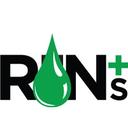Natural Selection of Biodiesel Process Technology

January 3, 2018
BY Blake Hendrix
Desmet Ballestra began researching transesterification of vegetable oils for biodiesel production in the early 1980s. In 1993, we built our first commercial-scale biodiesel plant for Estereco in Umbertide, Italy. Today, Desmet Ballestra is positioned to design and supply multifeedstock biodiesel plants from 50,000 to 500,000 tons per year, complying with the most stringent international specifications. Globally, Desmet Ballestra has built 220 oleochemical processing plants. There are 103 Desmet Ballestra-designed biodiesel plants operating today.
Our process technologies not only produce high-quality biodiesel but also a wealth of consumer products with which most people are familiar. We go deep into the consumer products chain for companies that formulate surfactants, detergents, sulfonated esters, soaps and more. With more than 50 years of experience, we understand oleochemical processing.
We offer a wide range of services and technologies to help our customers discover the total cost of ownership over the life of their plant. This depends largely on feedstock choice, which affects the number of processing stages and type of technologies employed. The decisions are often based on favorable economics and environmental stewardship. All successful process designs must meet those two broad criteria. We operate that way, and we offer no less for our customers. Roughly 80 percent of our business is from repeat customers.
We constantly strive to improve our processes and embrace development of new technologies where applicable. Since the biodiesel “gold rush” in the mid-2000s, we have focused on a number of ways to make our plants better. The plants we build today are not the same as those we built 15 years ago. Many of our earlier designs have been upgraded as markets change, with each piece examined and modeled for optimum performance.
While some of our valued customers are vertically integrated and rely exclusively on a single virgin oil feedstock, others have adapted to processing multiple feedstocks. Some of our biggest changes have been in frontend multifeedstock pretreatment. We prefer to not include total acid esterification in the main process stream. Many biodiesel plants we build have FFA (re)esterification units inside, using either methanol to convert distilled fatty acids from pretreatment and fatty acids in the oleins recovered from the glycerin into their methyl ester form, or using glycerin to produce mono, di and triglycerides, which are sent back to the transesterification process.
All new technologies have advantages and disadvantages. My job is to evaluate what technologies fit the customer’s business model. Through our vast R&D resources, Desmet Ballestra has evaluated enzymatic processing for years with Novozymes. The main issue with enzymatic processing is residual fatty acids, mono and diglycerides that must be treated through tricky caustic post-neutralization, to meet EN and ASTM specs. This is technically achievable, but there is always a tradeoff. We must compare new approaches to the standard, and evaluate total cost of ownership—capex, opex, long-term payback and more. Operating costs such as catalyst or resin replacement are crucial to know. Opex is every day—that doesn’t change once the plant is built. If you get rid of sodium methoxide, what cost takes its place? Usually it’s energy and additional cap-ex.
When comparing new processes to the standard, we must always ask if it makes sense to change. One viable use for enzymatic processing is a small parallel plant to traditional transesterification that can take a coproduct fatty acid stream and convert it to methyl esters. It would conveniently close the loop, and we’ll see more of this.
Another new technology we have embraced is hydrodynamic cavitation through our partnership with Cavitation Technologies Inc. We have successfully applied nanocavitation in the edible oil market and its use in biodiesel will increase yield and reaction kinetics, reduce consumables, make separation easier and reduce total contamination. We are installing full-scale hydrodynamic nanocavitation reactors now and within a year we will see greater adoption.
Feedstock choice plays a major role in technology decisions. It is not economically feasible to design a plant for virgin oils and then decide to process brown grease. Desmet Ballestra has designed a number of pretreatment plants for renewable diesel production facilities, including Diamond Green Diesel. Renewable diesel, often called second- or next-generation biodiesel, is an existential threat to first-generation biodiesel because of feedstock competition and its fuel properties make Big Oil more accepting of higher blend volumes. Renewable diesel integrates into the distribution system easier, including pipelines. As more petroleum companies develop renewable diesel plants, competition for feedstock will get fierce. Hydrotreaters can take in a variety of material, but they require purity in earth metals. Yellow grease, distillers corn oil, deadstock fat, and virgin oils, however, are all for the taking and leave classical biodiesel producers with the leftovers from which it is difficult to remove metals. That’s why we’re interested in enzymatic processing and other alternative processes. They can handle undesirable feedstocks and become economically viable when competition for easier-to-treat feedstock hits a tipping point. When classical biodiesel producers start competing with petroleum companies for feedstock on a grand scale, they will be relegated to processing more difficult material. An exception to this is the vertically integrated soy/canola oil biodiesel processors who control their own feedstocks.
Author: Blake Hendrix
President & CEO, Desmet Ballestra North America Inc.
770-693-0061 ext. 116
blake.hendrix@desmetballestra.com
Advertisement
Advertisement
Related Stories
Biodiesel capacity in the U.S. and Canada dipped slightly stable in 2024, with several renewable diesel producers reporting headwinds and lower margins alongside a drove of SAF projects in various stages of development.
The IEA’s Task 39 group has new research regarding the development and status of the sustainable aviation fuel industry.
The U.S. EPA on Nov. 16 released updated RIN data, reporting that nearly 2.11 billion RINs were generated under the RFS in October, up from 1.81 billion generated during the same month of last year.
Conestoga to host SAFFiRE cellulosic ethanol pilot plant
Conestoga Energy and SAFFiRE Renewables LLC announced on Nov. 16 their agreement for Conestoga to host SAFFiRE’s cellulosic ethanol pilot plant at Conestoga’s Arkalon Energy ethanol facility in Liberal, Kansas.
Officials at Calumet Specialty Products Partners L.P. discussed the company’s proposed plans to boost sustainable aviation fuel (SAF) production at its Montana Renewables biorefinery during third quarter earnings call, held Nov. 9.
Upcoming Events










